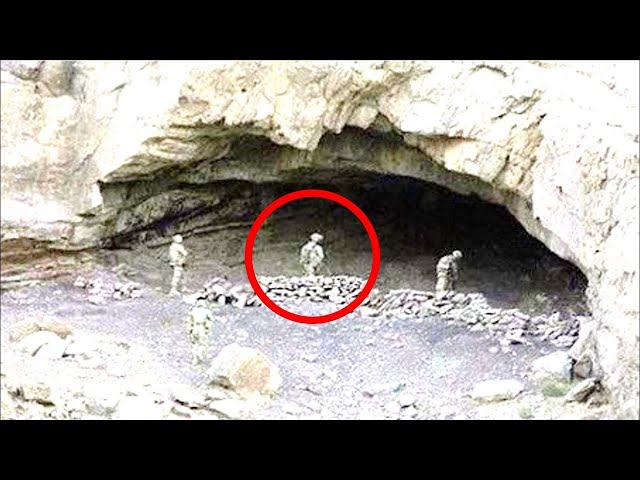Caves have always been fascinating to explore and uncover the secrets that they hold. From The Cave of Horror to The Borneo Cave, caves have revealed some of the most intriguing and unusual finds in the world of archaeology. Here are 10 of the strangest archaeological discoveries made in caves. VIDEO IS AT THE END OF THE ARTICLE:
- The Borneo Cave: Located in the island of Borneo, Indonesia, the Borneo Cave is known for the ancient human remains found there. Over 40 individuals’ remains have been excavated, dating back around 40,000 years. The cave also features unique rock art, including hand stencils and animal paintings estimated to be around 40,000 years old.
- The Lascaux Caves: Situated in southern France, the Lascaux Caves are famous for their well-preserved cave paintings. Discovered in 1940, the caves contain over 600 images of animals, humans, and abstract symbols. The paintings, estimated to be around 17,000 years old, provide important insights into Paleolithic art and culture.
- The Crystal Cave of Giants: Located in Naica, Mexico, this cave is home to some of the largest selenite crystals ever found. These crystals, reaching up to 36 feet in length and weighing up to 55 tons, were formed by mineral-rich water seeping into the cave. The cave’s unique geological formations make it one of the most remarkable sites in the world.
- The Tulum Cenote: In Mexico’s Yucatan Peninsula, the Tulum Cenote is a sinkhole filled with crystal-clear water. Divers discovered a submerged cave system in 2016 containing human remains and artifacts dating back to the Mayan civilization. These discoveries offer valuable insights into Mayan religious and ceremonial practices.
- The Cave of the Red Hand, Ireland: Located in County Cavan, Ireland, this cave is known for its red handprints adorning the walls. Estimated to be around 5,000 years old, these handprints are believed to have been made as part of a prehistoric ritual or ceremony. The cave’s carvings of animals and human figures add to its mystery.
- The Chauvet Cave, France: Containing some of the oldest known cave paintings in the world, the Chauvet Cave in southern France dates back around 30,000 years. The remarkably well-preserved paintings depict animals such as lions, bears, and rhinoceroses, providing valuable insights into prehistoric life and culture.
- The Cave of the Swallows, Mexico: Located in San Luis Potosi, Mexico, this cave features a massive vertical shaft descending over 1,000 feet. In 2000, scientists discovered human remains and artifacts at the bottom of the shaft, dating back around 2,000 years and likely left by the ancient Maya people.
- The Caves of the Thousand Buddhas, China: Situated in China’s Gansu Province, these Buddhist caves contain thousands of statues, frescoes, and manuscripts excavated between the 4th and 14th centuries. Among the discoveries are ancient manuscripts providing valuable insights into the religious practices of ancient China.
- The Cave of the Bells, Spain: Located in the Atapuerca Mountains of Spain, this cave is known for the thousands of human remains found there, dating back around 400,000 years. The cave offers insights into the lives and behaviors of Neanderthals and early modern humans, as well as their technological advancements.
- Cave of Horror, Israel: Situated in the Judean Desert, Israel’s Cave of Horror is known for the mass burial site discovered there in the early 1960s. The cave contained the remains of over 800 individuals, believed to have been killed during the Roman conquest of Jerusalem in 70 AD. Further excavations have revealed artifacts dating back to the Roman period, shedding light on ancient Jewish culture and beliefs.
These 10 discoveries represent just a fraction of the many strange and mysterious finds made in caves around the world. From ancient art to human remains, each discovery offers valuable insights into the beliefs, practices, and daily lives of our ancestors, reminding us of the rich history hidden beneath the earth’s surface.
WATCH THE VIDEO HERE
Categories:
NEWS
